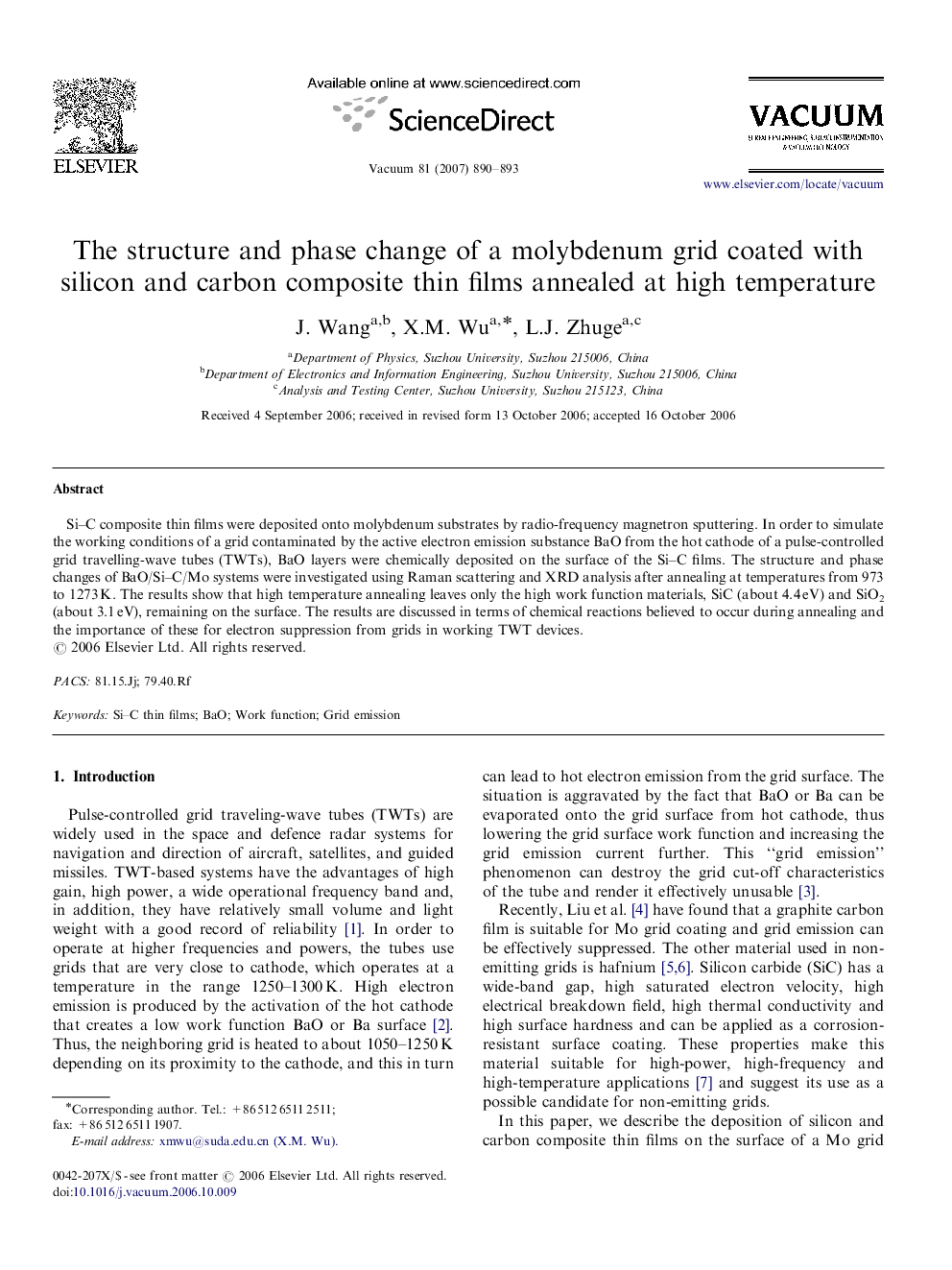| Article ID | Journal | Published Year | Pages | File Type |
|---|---|---|---|---|
| 1689624 | Vacuum | 2007 | 4 Pages |
Abstract
Si-C composite thin films were deposited onto molybdenum substrates by radio-frequency magnetron sputtering. In order to simulate the working conditions of a grid contaminated by the active electron emission substance BaO from the hot cathode of a pulse-controlled grid travelling-wave tubes (TWTs), BaO layers were chemically deposited on the surface of the Si-C films. The structure and phase changes of BaO/Si-C/Mo systems were investigated using Raman scattering and XRD analysis after annealing at temperatures from 973 to 1273Â K. The results show that high temperature annealing leaves only the high work function materials, SiC (about 4.4Â eV) and SiO2 (about 3.1Â eV), remaining on the surface. The results are discussed in terms of chemical reactions believed to occur during annealing and the importance of these for electron suppression from grids in working TWT devices.
Keywords
Related Topics
Physical Sciences and Engineering
Materials Science
Surfaces, Coatings and Films
Authors
J. Wang, X.M. Wu, L.J. Zhuge,
